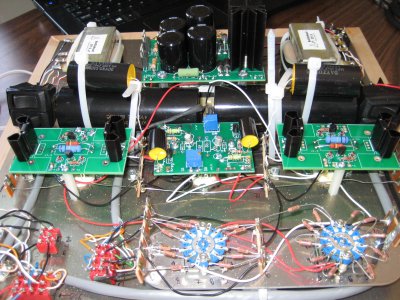swich401 said:If I installed a switch to change between capacitors while the Mainline was still on, does anybody see any potential problems associated with this??
Would a higher capacitance value affect the higher frequencies?
I wouldn't recommend the switch. You'd be switching high voltage DC (even if you switched the cold side of the cap, there will be a charge spike across the contacts)
The actual construction of the capacitor will influence high frequency tonal balance, but not the actual value itself.


